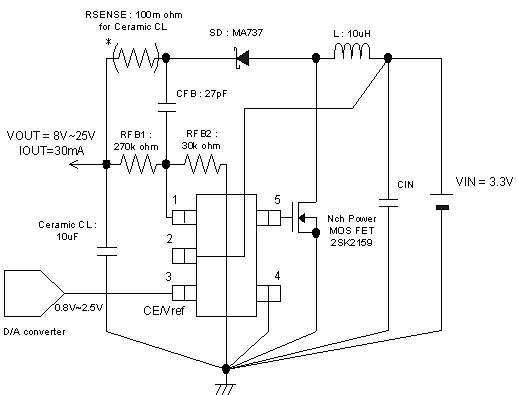Variable Output Voltage Step-Up DC/DC Controllers
The XC9106 series are step-up DC/DC controller ICs with an externally applied reference voltage (Vref).
Output voltage will be set with external resistors (RFB1 and RFB2) and Vref value. The series make it easy to control output voltage externally and are suited to software applications that need to vary voltage, such as LCD power supply for PDA.
Output will be stable no matter which load capacitors are used but if a low ESR capacitor is used, RSENSE of about 0.1Ω will be required and phase compensation will be achieved. This makes the use of ceramic capacitors much easier, and allows for lower output ripple and reduced PCB area requirements. Tantalum and electrolytic capacitors can also be used, in which case, RSENSE becomes unnecessary.
Oscillation frequencies of high clock, low ripple 300kHz and low quiescent current 100kHz are available.
Feature
| Input Voltage Range | 0.9V~10V |
| Power Supply Voltage Range | 1.8V~10.0V and more than Vref+0.7V |
| Oscillation Frequency | 300kHz,100kHz±15% |
| Output Current | More than 30mA |
| Control | PWM/PFM Auto |
| High Efficiency | 85%(TYP.) |
| Stand-by Current | ISTB=1.0μA(MAX.) |
| Load Capacitors | Low ESR capacitors compatible |
Typical Application Circuit

Quality Reports
Technical Document
Packages
XC9106 Series Part Numbers
Inquiries About XC9106
Please wait for a while until the form is displaying.
If the form is not displaying, please contact us from inquiry form.